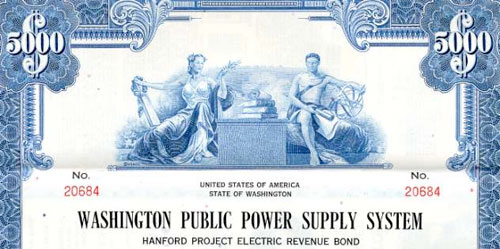
Blog
-
Geiger Readings for March 10, 2014
Ambient office = 111 nanosieverts per hourAmbient outside = 108 nanosieverts per hourSoil exposed to rain water = 113 nanosieverts per hourRed bell pepper from Central Market = 116 nanosieverts per hourTap water = 161 nanosieverts per hourFiltered water = 151 nanosieverts per hour -
Geiger Readings for March 9, 2014
Ambient office = 119 nanosieverts per hourAmbient outside = 104 nanosieverts per hourSoil exposed to rain water = 92 nanosieverts per hourCarrot from Central Market = 68 nanosieverts per hourTap water = 119 nanosieverts per hourFiltered water = 112 nanosieverts per hour -
Geiger Readings for March 9, 2014
Ambient office = 119 nanosieverts per hourAmbient outside = 104 nanosieverts per hourSoil exposed to rain water = 92 nanosieverts per hourCarrot from Central Market = 68 nanosieverts per hourTap water = 119 nanosieverts per hourFiltered water = 112 nanosieverts per hour -
Geiger Readings for March 8, 2014
Ambient office = 87 nanosieverts per hourAmbient outside = 113 nanosieverts per hourSoil exposed to rain water = 110 nanosieverts per hourHass avacado from Central Market = 73 nanosieverts per hourTap water = 104 nanosieverts per hourFiltered water = 85 nanosieverts per hourFinnish Salmon – PCaught in USA = 133 nanosieverts per hour -
Nuclear Reactors 106 – Washington Public Power Supply System History 2
My last post had to do with early Washington Public Power Supply System(WPPSS) history up to the 1970s. Today I am going to continue with the history of WPPSS.
In 1982, WPPSS halted the construction of two of the planned nuclear reactors. The projected costs of completing all five of the new reactors had risen from an estimated sixteen billion dollars to twenty four billion dollars. When the two reactors were cancelled, WPPSS was forced to default on two billion two hundred fifty thousand dollar worth of bonds that had been issued to cover the cost of construction. With the biggest bond default the country had ever seen, the utilities and the ratepayers had to repay the bond holders. Two more of the WPPSS reactors were never completed. Their costs were borne by the Bonneville Power Administration(BPA) with proceeds of hydroelectric dams on the Columbia River. Ultimately, of course, the BPA customers paid for the cancelled reactor construction.
After thirteen years of litigation, the various lawsuits were settled for seven hundred and fifty three million dollars. Some of the over seventy five thousand bond holders recovered forty cents of every dollar they had invested. Other investors only got ten cents for every dollar invested. It turned out that money allocated for the second two reactors were spent on the last two which further complicated the settlement of the bond default. Seattle owed fifty million dollars, forty three million of which was paid by insurance companies. The last of the settlements took place in 1995.
The only reactor to be completed by WPPSS of the five that had been planned was located at Hanford. It is now called the Columbia Generation Station. It currently supplies about twelve percent of the electricity sold by the BPA. The other four plants that were never completed were mothballed in case it was decided to finish them at some future time. In 1995, WPPSS decided that it would demolish the work that had been completed.
In 1998, WPPSS was renamed Energy Northwest. The reason for the name change was the concern that the costly failure of four of the five reactors projects would make it difficult for the corporation of obtain future investment if it retained the original name. Unfortunately, there was another company that had already been using the new name. WPPSS ultimately had to pay two hundred and sixty thousand dollars to settle a lawsuit over the name.
And now, in 2014, Energy Northwest is sending people to Olympia to convince the state legislature that new reactor construction should be considered by the State of Washington. There have been suggestions that any new reactor be constructed at Hanford which would suit Energy Northwest just fine. Unfortunately, since the construction of the only WPPSS reactor to be completed, another fault has been discovered under Hanford. In addition, a sixty five foot crack has been found in a spillway support of the Wanapum Dam north of Hanford posing a flood threat. Even if Washington State does decide to build a new reactor it would be best if it were not constructed at Hanford and not be connected to the massive collapse of an earlier nuclear reactor construction project.
WPPSS bond:
-
Radiation News Roundup March 7, 2014
Recent report says that Fukushima “far worse” than authorities admit. enenews.com
Japan newspapers are saying that it appears ‘high-level radioactive contaminated water’ is flowing into ocean at Fukushima. enenews.com
Jamie Edwards, who describes himself as an “amateur nuclear scientist,” claims to have achieved fusion earlier this week after researching and building a fusor. world-nuclear-news.org
A random fitness for duty test last week suggested a senior reactor operator at the Salem nuclear plant had been using cocaine. nuclearstreet.com
-
Geiger Readings for March 7, 2014
Ambient office = 77 nanosieverts per hourAmbient outside = 85 nanosieverts per hourSoil exposed to rain water = 86 nanosieverts per hourRomaine lettuce from Top Foods = 99 nanosieverts per hourTap water = 97 nanosieverts per hourFiltered water = 81 nanosieverts per hour




